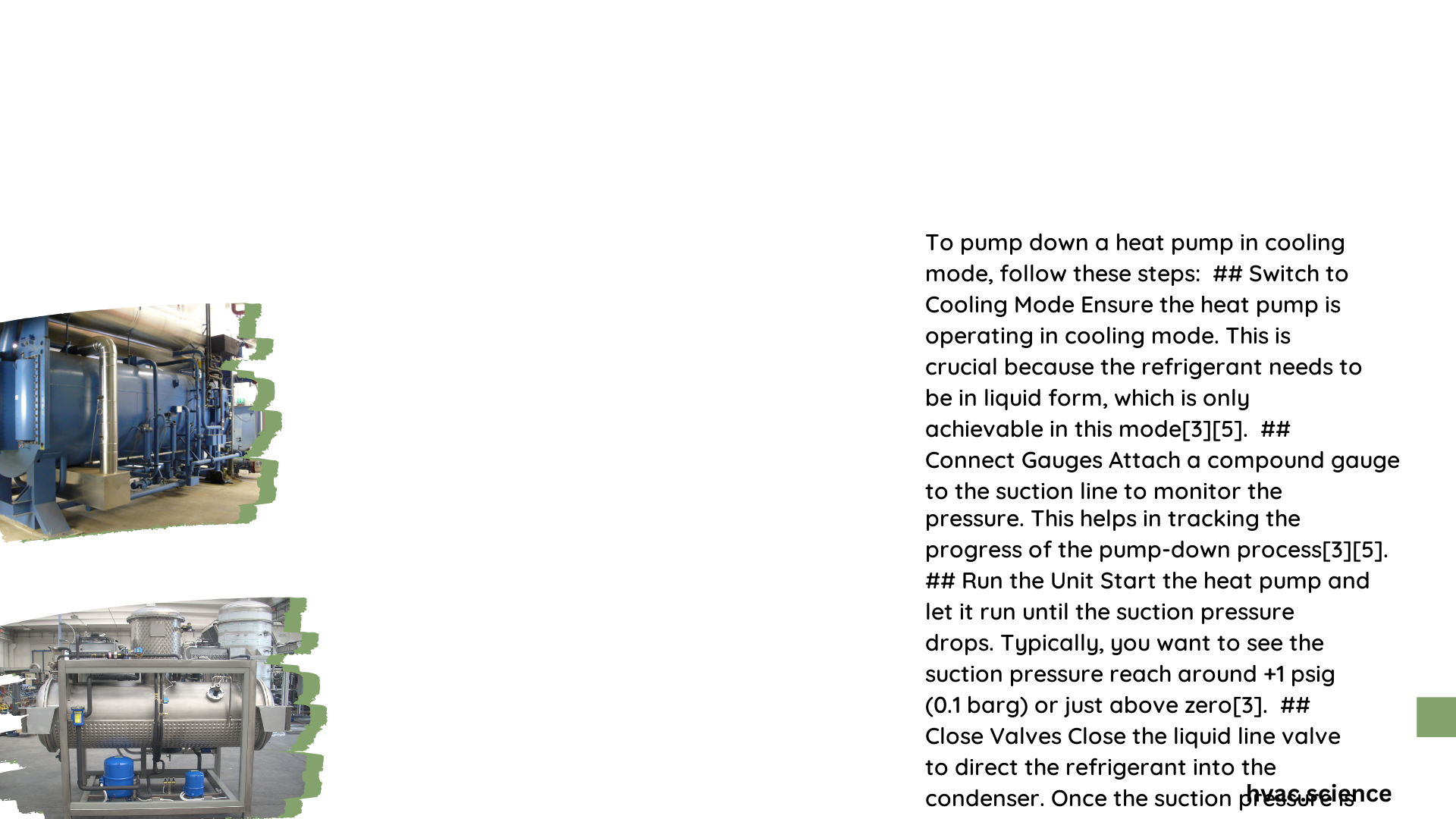Heat pump pumping down in cooling mode is a critical maintenance procedure that isolates refrigerant in the outdoor condenser coil or accumulator. This process prevents damage and leakage during system maintenance, ensuring optimal performance and longevity of the heat pump. By understanding the pressure measurements, cycle operation parameters, temperature control mechanisms, and common challenges associated with this procedure, HVAC technicians can effectively maintain and troubleshoot heat pump systems.
What Are the Key Pressure Measurements During Heat Pump Pumping Down?
When pumping down a heat pump in cooling mode, monitoring refrigerant pressure is crucial. Here are the key pressure measurements to observe:
- High Side Pressure
- Normal operation: 150-200 PSI (varies with outdoor temperature and system design)
-
During pump down: Should drop to near zero or very low (e.g., 10-inch Hg or 0 PSI)
-
Low Side Pressure
- Should drop to near zero or a very low value
- Indicates successful refrigerant isolation from indoor coil and compressor
How Does the Heat Pump Cycle Operate During Pumping Down?

The heat pump cycle during pumping down follows a specific sequence of events:
- Initial Operation
- Run system for 2-5 minutes
-
Ensures full operation and refrigerant cycling
-
Liquid Valve Closure
- Close liquid line valve gradually
-
Prevents refrigerant backflow to indoor coil
-
Pressure Monitoring
- Continuously monitor high and low side pressures
-
Ensure they drop to desired levels (near zero or very low)
-
Final Shutdown
- Turn off system once pressures reach desired levels
- Typically done by turning off thermostat or disconnecting power
What Temperature Control Mechanisms Are Involved in Pumping Down?
During the heat pump pumping down process in cooling mode, temperature control mechanisms play a minimal role:
- No specific setpoint adjustments are made
- Focus is on refrigerant isolation, not temperature control
- Response time depends on pressure drop after liquid valve closure (typically a few minutes)
While the process doesn’t directly affect cooling mode efficiency, proper pumping down maintains system health and prevents potential efficiency-reducing issues.
What Are Common Challenges and Solutions in Heat Pump Pumping Down?
Several challenges can arise during the heat pump pumping down process. Here’s a table outlining common issues and their solutions:
| Challenge | Solution |
|---|---|
| Refrigerant Leaks | Ensure all valves are properly closed and system is fully pumped down |
| System Restrictions | Identify and address restrictions (e.g., stuck pistons, dirty coils) |
| Incorrect Valve Operation | Follow correct sequence of valve closures to avoid component damage |
Best practices for successful heat pump pumping down include:
- Gradually close the liquid valve to avoid sudden pressure drops
- Continuously monitor high and low side pressures
- Perform regular maintenance to prevent restrictions and maintain optimal performance
How to Perform a Safe Pump Down Procedure?
Performing a safe pump down procedure is essential for maintaining your heat pump system. Follow these steps:
- Run the system in cooling mode for a few minutes
- Close the liquid line service valve slowly
- Monitor suction pressure until it reaches 0 PSI or goes into a vacuum
- Turn off the system at the thermostat or disconnect power
- Close the suction service valve
Remember, safety should always be your top priority when working with HVAC systems.
What Are the Benefits of Proper Heat Pump Pumping Down?
Proper heat pump pumping down offers several benefits:
- Prevents refrigerant leaks during maintenance
- Protects system components from damage
- Ensures accurate diagnostics and repairs
- Maintains system efficiency and performance
- Extends the lifespan of the heat pump
By following correct procedures and best practices, HVAC technicians can ensure the longevity and optimal performance of heat pump systems.
How Does Pumping Down Affect Overall System Efficiency?
While the pumping down process itself doesn’t directly impact cooling mode efficiency, it plays a crucial role in maintaining overall system health:
- Prevents refrigerant contamination
- Allows for safe maintenance and repairs
- Ensures proper refrigerant charge after service
- Helps identify potential issues before they become major problems
By facilitating proper maintenance, pumping down indirectly contributes to long-term system efficiency and performance.
In conclusion, understanding the intricacies of heat pump pumping down in cooling mode is essential for HVAC professionals. By mastering this process, technicians can ensure safe and effective maintenance, leading to optimal heat pump performance and longevity.
References:
1. Safe Pump Down Procedure of an Air Conditioner or Heat Pump
2. Checking the Charge on a Heat Pump in the Winter
3. Checking The Charge On A Heat Pump In The Winter
